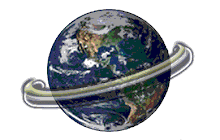
Beaufort scale created by British Admiral Sir Francis Beaufort in 1805. Wind and waves are inter-related. The stronger the winds, the higher will be the waves. The wind strength has direct influence on the state of the sea. Beaufort developed the scale based on experience and observations on board a warship (called "44 gun man-of-war"). The scale is in form of a table grading the wind strength from force 0 to force 12 (totally 13 categories).
The Beaufort wind scale was originally drawn up to relate the number of canvas sails required to each category of the wind forces. The higher the wind force, the less canvas sails would be required.
The Beaufort wind scale was revised several times. In 1906, the description was extended from sea state to land observations of objects being blown by winds. In 1926, a set of equivalent wind speeds corresponding to the Beaufort wind force scale was adopted. In 1947, reporting of wind velocity in knots was agreed by the International Meteorological Organization. Description of the sea state and effects on land according to the different Beaufort wind forces (and equivalent velocities)
In 1946, the wind scale was expanded with the addition of wind forces 13 to 17. However, the expanded scale is not widely used.
Today, hurricane force winds are sometimes described as Beaufort scale 12 through 16, very roughly related to the respective category speeds of the Saffir-Simpson Hurricane Scale, by which actual hurricanes are measured, where Category 1 is equivalent to Beaufort 12. However, the extended Beaufort numbers above 13 do not match the Saffir-Simpson Scale. Category 1 tornadoes on the FujitaTORRO scales also begin roughly at the end of level 12 of the Beaufort scale but are indeed independent scales. and
Note that wave heights in the scale are for conditions in the open ocean, not along the shore.

No comments:
Post a Comment